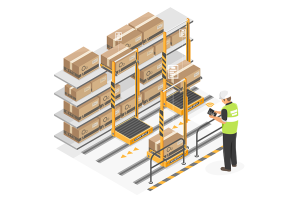In what Gartner has called the Postmodern ERP era, eProcurement technology and technology in general has become more accessible from both an availability and ease-of-use standpoint than it has been historically. However, does increased technological accessibility ensures success if cultural misalignment exists within an organisation?
Jon Hansen, Editor and lead writer for the Procurement Insights Blog, unpacks the digital revolution and corresponding cultural influences from procurement’s point of view.
In a recent discussion paper, I examined the cultural effect or influence on the development, introduction and successful implementation of a digital strategy from four key areas, namely home culture, generational culture, gender culture and senior management culture.
Through the examination of these four areas, you can determine the alignment of your current cultural environments and use said understanding as a predictive tool for determining your organisation’s digital readiness and, as a result, likelihood of initiative success.
In this article I look at this from procurement’s point of view.
The digital revolution
The digital revolution has and will continue to permeate all areas of everyday life, bringing with it the promise of greater efficiencies, conveniences and savings. Everything from self-driving vehicles to at-your-fingertip (or voice) assistance for managing all facets of your world is now becoming a reality.
The influence of technological breakthroughs in the emerging digital age is no different for the business world from the standpoint of streamlining important processes and reducing costs. However, the successful introduction of new and exciting technologies into the work environment comes down to recognising and managing four distinct digital cultures.
Within the context of this understanding, it is important for procurement to recognise that the functional silo that has traditionally defined and confined its role within the enterprise no longer exists. In fact, the functional silos in the areas of Finance and IT have also dissolved into a holistic redefinition of organisational roles and responsibilities. What this means is that procurement professionals can no longer view the world through a myopic functional lens, but one that reflects not only its strategic importance but also includes a broader view of the enterprise as a whole. And it is through this expanded lens that procurement professionals must view digital transformation and, more specifically, the four cultural influences that are shaping the global organisation of the future.
The four cultures of digital transformation
Home culture: experience buying a product for personal use at home through a computer or other device has influenced procurement’s understanding and expectations of how technology can be better utilised to streamline the buying process at work. In fact, it would be reasonable to conclude that collective individual at-home buying experiences across all organisational hierarchies have contributed to the acceptance of today’s pay-by-the-drink SaaS (software as a service) or on-demand platforms. In short, procurement professionals have played an instrumental role in the transformation of traditional back-end enterprise systems to the on-demand or SaaS platforms that are now widely in use. This level of influence not only elevates procurement’s strategic presence, it also paves the way for claiming the long sought-after seat at the executive table.
Generational culture: depending on the source and age breakdown, there are either four or five different generations that are simultaneously employed within the same organisation today. Suffice to say that a multi-generational workforce creates both complexities from a management point of view as well as opportunity relating to experience and diversity. The key to finding the right balance between engagement towards achieving maximum productivity and a collective organisational outcome is dependent on knowing the actual demographics of the organisation’s workforce and the corresponding roles of each generational group, including their core competencies.
During a series of surveys taken during a major procurement conference, attendees were asked a single question: if you had the opportunity to go back in time and choose another career path, would you still choose to be a procurement professional? Almost 50% of respondents said no, they would choose a different career path to procurement. What was telling is that this sentiment was not confined to a specific demographic, but included men and women, baby boomers and millennials. This result highlights the fact that the generational divide in procurement may not be as significant as it is in other industries or professions. Based on the paper’s research regarding generational views of technology, the digital revolution will provide the opportunity to redefine procurement’s role and influence, and, in the process, will further narrow the gap between generations within the procurement realm.
Gender culture: during a recent interview, Microsoft Canada’s new President Kevin Peesker talked about a just-released ICTC study which reported that there are 216 000 open roles in technology, but that less than 10% is the “actual population of females in the tech space”. He then went on to say that “digital transformation will not happen without women”.
From a procurement standpoint, the profession must look at pay equity as a good starting point for not only engaging women in the field but tapping into their ability to make important contributions to the evolution and elevation of procurement’s role in the global enterprise.
Senior management culture: a high level of senior management commitment to creating a culture that brings more women into the digital world is not the only area on which leadership should focus if they want their organisations to implement a digital strategy successfully. There needs to be a greater commitment to what a December 2017 Harvard Business Review article called “digital reinvention”.
When it comes to an organisation’s supply chain, and despite what McKinsey cited as the recognition on the part of participating firms regarding the potential influence that digital reinvention will have on the growth of revenues and profits, only 2% report that the supply chain is part of their “forward-looking digital strategies”.
It is, therefore, incumbent on executive leadership to take a much more proactive view and approach to digital reinvention. Given procurement’s increasingly recognised strategic importance and advanced utilisation of new and emerging technology, it is in this area of the enterprise that organisations should focus their digital reinvention strategy.
Conclusion
From a procurement point of view, those in the profession must take the initiative to become digital champions within their respective organisations. Given the emergence of Robotic Process Automation and Artificial Intelligence in the purchasing process, a failure to take on this role will relegate a good percentage of today’s professionals to a status of irrelevance.
To access the full discussion paper, click here.
Smart Procurement World conference highlight: The Internet of things presentation: will digitalisation work in your organisation? Ndabeni Bagosi, Former CPO, Head of Agility and Cost Management, TOTAL. Join us on 15 & 16 May 2018 at Grand West.


























